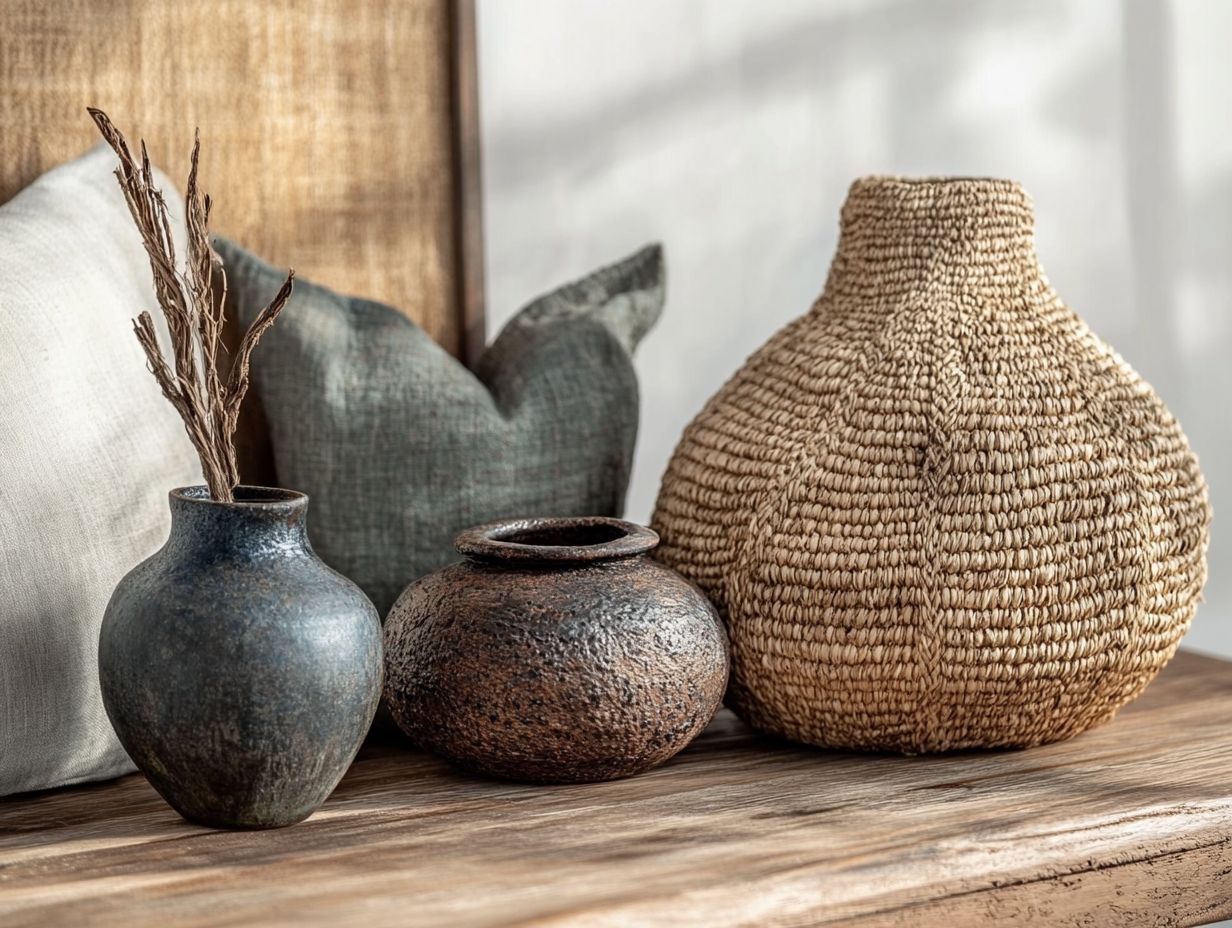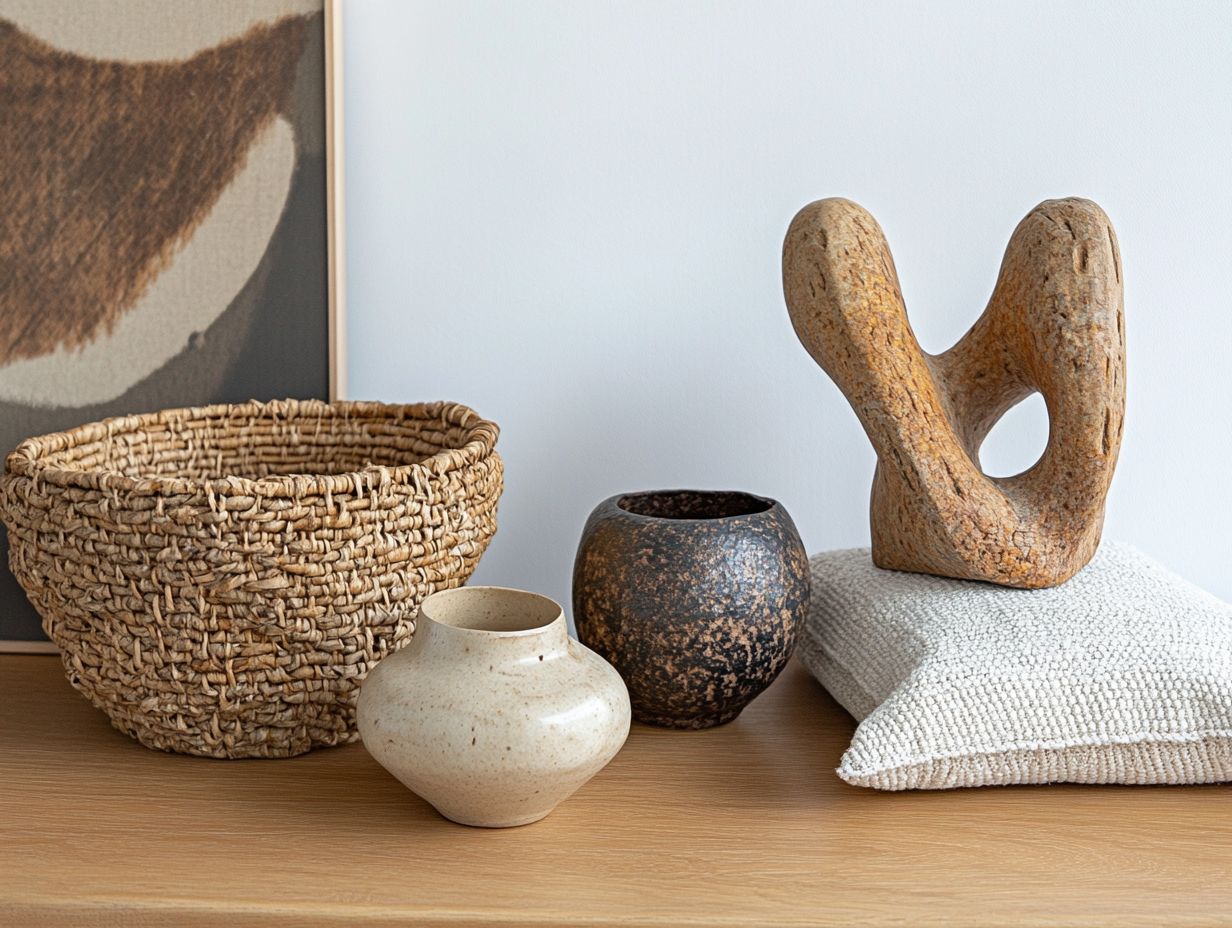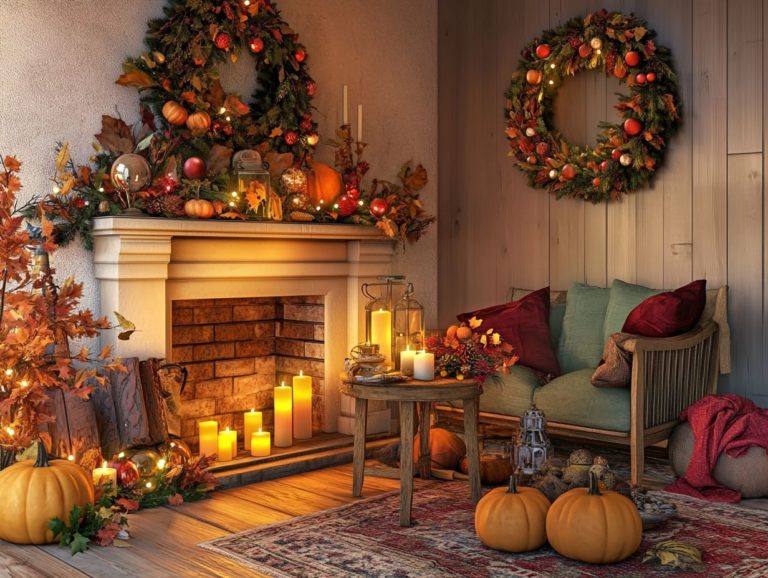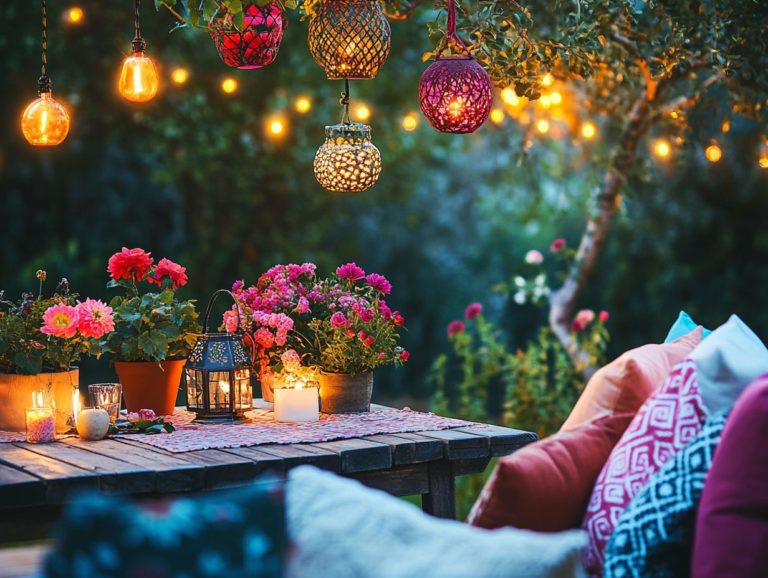The Impact of Texture in Decorative Items
When it comes to home decor, texture is often the unsung hero that elevates your space from ordinary to extraordinary. It s that secret ingredient that adds depth, warmth, and visual intrigue, transforming your home into a sanctuary that truly reflects your personality.
This article invites you to explore various types of textures from sumptuous natural fibers to sleek synthetic finishes and discover how to artfully incorporate them into your decor. You’ll uncover tips for creating captivating focal points, balancing textures with other design elements, and even some delightful DIY projects that will elevate your space without straining your budget.
Get ready to transform your home like never before!
Contents
- Key Takeaways:
- The Importance of Texture in Home Decor
- Types of Textures in Decorative Items
- Using Texture to Create a Focal Point
- Texture as a Design Element
- Mixing and Matching Textures
- Creating Texture with DIY Decor
- Frequently Asked Questions
- What is the impact of texture in decorative items?
- How does texture affect the overall aesthetic of a room?
- What types of textures are commonly found in decorative items?
- Can texture be used to create a specific mood in a space?
- How can I incorporate texture into my home decor?
- Is it important to consider the texture of a decorative item when styling a room?
Key Takeaways:

- Texture is a key element that enhances the overall look and feel of a space in home decor.
- Natural and synthetic textures offer unique and complementary options for decor.
- Incorporating texture strategically can create a focal point and bring balance to a room’s design.
The Importance of Texture in Home Decor
The significance of texture in home decor truly cannot be overstated. It infuses depth and warmth into spaces, resulting in an inviting atmosphere that embodies comfort and style. By thoughtfully incorporating a variety of tactile (relating to touch) and visual textures (how something appears) through materials like plush furnishings, ceramics, and rugs, you can achieve a striking balance that enhances modern aesthetics.
Renowned designers like Tiffany Leigh and Martin Waller emphasize the importance of layering different textures in creating unique environments. This approach transforms each room into a captivating space adorned with decorative accents that reflect your personal style.
How Texture Enhances a Space
Texture plays a pivotal role in enhancing your space, transforming ordinary interiors into vibrant, inviting environments brimming with depth and warmth. By layering various textures smooth surfaces, plush fabrics, and decorative accents you can create a dynamic atmosphere that fosters comfort and intrigue.
Imagine your living room: a soft velvet sofa beckons you to relax, while chunky knit throw blankets wrap you in coziness. Vibrant throw pillows with intricate patterns serve as eye-catching accents, contributing to a carefully curated aesthetic. Incorporating materials like reclaimed wood for your coffee table adds a rustic touch that beautifully contrasts with sleek metal lamps, casting a warm glow throughout the room.
The interplay of light with these varied textures enhances their unique qualities, making your space not only visually appealing but also emotionally enriching. Soft, ambient lighting blends seamlessly with plush elements, creating a serene setting that encourages you to unwind after a long day.
Types of Textures in Decorative Items
When considering decorative items, understanding the distinction between tactile (related to touch) and visual textures can significantly elevate the aesthetic experience of your home. The plush nature of fabric textures evokes comfort, while the sleek allure of smooth surfaces offers modern appeal.
Each material possesses unique attributes that can enhance or transform the ambiance of your space.
Natural vs. Synthetic Textures
Natural textures, drawn from organic materials, envelop you in warmth and comfort, while synthetic textures shine with their durability and versatility in design. Understanding the balance between these two can guide you in creating a harmonious environment that satisfies both aesthetic allure and functional demands.
Incorporating elements such as wood, cotton, and wool can imbue your space with tranquility, making it perfect for living areas or bedrooms where relaxation reigns supreme. Conversely, materials like polyester and nylon excel in durability, rendering them ideal for high-traffic zones like hallways or family rooms.
By blending these textures, you can curate inviting spaces that captivate the eye and endure the test of time, ensuring that comfort and longevity harmoniously coexist throughout your home.
Using Texture to Create a Focal Point

Strategically employing texture can transform your space, guiding the eye toward statement pieces or architectural elements that define the room’s stylistic theme. By skillfully mixing and layering different textures, you can create a captivating visual weight that elevates the overall design. This draws attention to the unique features that make your room truly remarkable.
Incorporating Texture in Different Areas of the Home
Incorporating texture throughout your home is key to crafting a welcoming and comfortable feel. Each space can benefit from your thoughtful textured choices, enhancing both comfort and coziness.
Take your living area, for example. Layering plush fabrics like velvet or boucl with smoother surfaces can add visual interest. This also brings warmth to the room.
In your bedroom, consider mixing linens, knits, and rustic wood accents. This creates a serene retreat that beckons relaxation.
The kitchen presents a fantastic opportunity. You can contrast sleek metal appliances with textured ceramics or wicker baskets, adding a welcoming touch to your culinary space.
By carefully selecting decorative accents like throw pillows, rugs, and wall art, you can effortlessly elevate each room’s ambiance. Ensure that every corner reflects its own unique charm.
Texture as a Design Element
Texture acts as an essential design element that shapes the balance and contrast within a space. It plays a pivotal role in creating the overall atmosphere. When employed thoughtfully, layered textures can transform a room into an inviting environment that exudes cohesion and engagement.
Balancing Texture with Other Design Elements
Balancing texture with other design elements like color and lighting is crucial for creating a harmonious atmosphere in your home. The way textures interact with these elements can elevate the overall design, transforming your spaces into welcoming havens.
Consider the impact of a soft, cozy rug grounding a room filled with sleek, modern furniture. It adds warmth while beautifully contrasting with the smooth surfaces around it.
Pay attention to color selection; it plays a vital role in your design. Cool hues can evoke tranquility, while warmer tones radiate energy and vibrancy.
Lighting can also enhance or soften textures. A well-placed lamp casts soft shadows, revealing the intricate patterns of your fabric. This thoughtful combination enriches the comfort and aesthetic appeal of your living space.
Mixing and Matching Textures
Mixing and matching textures is a fun way to create a unique and cozy vibe. This significantly enhances the coziness of any space.
By thoughtfully layering various textures, you can craft a vibrant and inviting environment that beautifully reflects your personal style and design inspiration.
Tips for Combining Different Textures

Combining different textures requires a keen understanding of layering techniques and contrast. This allows you to create a visually engaging space while maintaining design harmony.
When you incorporate materials like plush fabrics, sleek metals, and rustic woods, you elevate the overall aesthetic of a room. Consider the balance between soft and hard elements, ensuring each texture complements and enhances the others.
For example, draping a chunky knit throw over a smooth leather sofa introduces a tactile element that invites touch and warmth. Adding decorative accents, such as woven baskets or a metallic vase, not only adds depth but also breaks the monotony, creating captivating focal points.
Start mastering these layering techniques now for a stunning space! By doing so, you ll ensure your area feels dynamically cohesive, embodying both sophistication and comfort.
Now that you know how to mix textures, get started on transforming your space into a cozy haven!
Creating Texture with DIY Decor
Creating texture with DIY decor offers an elegant and affordable way to improve your space. This approach allows you to explore tactile objects objects you can feel and layered textures, contributing to a warm and inviting atmosphere.
By harnessing everyday materials and innovative techniques, you can design unique accents that truly transform your home into a sanctuary of style and comfort.
Easy and Affordable Ways to Add Texture to Your Space
Transform your space easily and affordably with these fun DIY projects and strategic decor choices that improve the cozy factor of your home. These methods help create an inviting atmosphere without stretching your budget.
Incorporating natural elements like woven baskets or textured throws can significantly enhance the warmth of any room. Imagine crafting your own wall hangings using fabric scraps or twine; these not only add a personal touch but also provide visual interest that sets your space apart.
Layer different materials, such as soft pillows or plush rugs, to amplify that cozy ambiance, making your home a welcoming haven for friends and family. Don’t underestimate the charm of affordable items like string lights or candles they can soften the lighting and transform spaces into intimate retreats.
By embracing these budget-friendly tactics, you can turn an ordinary setting into a snug getaway that everyone will adore. Start your DIY journey today and watch your home transform into a cozy haven!
Frequently Asked Questions
What is the impact of texture in decorative items?
Texture plays a crucial role in adding visual interest, depth, and dimension to decorative items. Understanding the influence of cultural heritage on decorative items can also enhance how a piece stands out and creates a unique ambiance in a space.
How does texture affect the overall aesthetic of a room?

The texture of decorative items can enhance the overall aesthetic of a room by adding contrast, creating a focal point, and understanding the value of decorative items adds a touch of sophistication.
What types of textures are commonly found in decorative items?
- Smooth
- Rough
- Glossy
- Matte
- Woven
- Carved
These textures can be found in various materials such as wood, metal, fabric, and glass.
Can texture be used to create a specific mood in a space?
Absolutely! Texture can be used to create a specific mood in a space. For example, a soft and plush texture can create a cozy and inviting atmosphere, while a sleek and shiny texture can give a more modern and sophisticated feel.
How can I incorporate texture into my home decor?
You can incorporate texture into your home decor in various ways, such as adding textured throw pillows, using a mix of different materials, incorporating textured wall art or decor pieces, and layering different textures in a space.
Is it important to consider the texture of a decorative item when styling a room?
Yes, it is important to consider texture when styling a room. It helps create balance and harmony in a space while adding an element of interest to the overall design.






